Blogging in 2025 offers a world of opportunities for beginners. With the continued growth of digital content and advanced tools available, starting a blog has never been easier, but standing out requires strategic planning and effort. This guide covers the key steps, trends, and strategies to help you launch and grow a thriving blog in 2025.
Step 1: Define Your Niche and Target Audience
Why Your Niche Matters
Selecting a niche is foundational to your blog’s success. A defined niche helps you attract a specific audience, establish authority, and streamline content creation. Gone are the days of generalist blogging – niche blogs perform better both in engagement and monetization.
Actionable Tips:
- Research High-Demand Topics: Use keyword tools like Google Keyword Planner or SEMrush to identify popular topics with manageable competition.
- Combine Passion and Expertise: Choose a niche you enjoy and have knowledge about to maintain long-term enthusiasm and credibility.
- Analyze Your Competitors: Study successful blogs in your chosen niche to understand trends and gaps you can fill.
Examples of profitable niches in 2025 include sustainable living, AI-driven productivity, niche travel experiences, and personal finance for specific demographics.
Step 2: Choose the Right Blogging Platform and Tools
Best Platforms for Beginners
A user-friendly blogging platform simplifies the setup process. WordPress.org remains the optimal choice for bloggers seeking flexibility and scalability. Alternative options include Wix for ease of use and Ghost for minimalist designs.
Essential Blogging Tools
To succeed in today’s competitive landscape, leverage cutting-edge tools. Must-haves include:
- Web Hosting: Choose reliable providers like Bluehost or SiteGround for fast, secure hosting.
- SEO Tools: Yoast SEO or Rank Math plugins for WordPress optimize your content for higher search rankings.
- Analytics: Google Analytics or MonsterInsights for tracking your blog’s performance.
- AI Assistants: Tools like GrammarlyGO or Jasper simplify content creation and editing.
Step 3: Design an Attractive and Functional Blog
Select a Responsive Theme
Your blog’s design influences first impressions and user experience. Opt for themes that:
- Are lightweight and optimized for speed, such as Astra or GeneratePress.
- Provide mobile-friendly layouts, as most traffic comes from mobile devices.
Optimize for Performance
- Use caching plugins like WP Rocket to enhance page speed.
- Compress images with tools like TinyPNG or Smush for faster loading times.
- Invest in CDN providers like Cloudflare to ensure global fast delivery.
Focus on Navigation
Simplify site navigation with clear menus and intuitive category structures. Make it easy for visitors to access the content they need.
Step 4: Create High-Quality, Engaging Content
Content remains the backbone of successful blogs. Prioritize quality and relevance over quantity.
Types of Content to Publish
- Actionable Guides and Tutorials: Provide step-by-step instructions on solving your audience’s challenges.
- List Posts: Offer curated lists of resources, tips, or tools.
- Opinion Pieces: Share unique perspectives on trending topics in your niche.
- Industry News: Keep readers updated on the latest trends.
Leverage AI for Content Creation
AI tools like ChatGPT can assist in generating content ideas, writing headlines, and improving drafts. While AI saves time, ensure your final copy retains a human touch.
Maintain Consistency
Establish a realistic posting schedule that you can sustain long-term. Aim for quality and regularity to build trust with your audience.
Step 5: Promote Your Blog Effectively
Master SEO
Search engine optimization is critical to increasing your blog’s visibility. Focus on:
- Keyword Research: Identify relevant keywords using tools like Ahrefs or Ubersuggest.
- On-Page SEO: Include target keywords naturally in titles, headings, and alt text for images.
- Technical SEO: Improve site speed, fix broken links, and ensure mobile optimization.
- Content Updates: Refresh old posts with updated information and keywords.
Leverage Social Media
Promote your content on platforms where your audience is active. Use visually appealing graphics created in Canva and schedule posts with Buffer or Hootsuite for consistent promotion.
Build an Email List
Start building an email list from day one by offering lead magnets like eBooks, templates, or exclusive tips. Tools like ConvertKit or Mailchimp can help manage campaigns.
Collaborate with Others
- Guest Blogging: Write guest posts for established blogs to reach wider audiences.
- Networking: Establish partnerships with influencers or brands in your niche.
Step 6: Monetize Your Blog Strategically
Once you’ve built a steady audience, explore various monetization strategies.
Affiliate Marketing
Recommend products or services relevant to your niche and earn a commission per sale. Join affiliate networks like ShareASale, CJ Affiliate, or Amazon Associates.
Sponsored Content
Collaborate with brands to create sponsored posts or reviews. Ensure that any partnerships align with your blog’s values.
Sell Digital Products
Develop and sell eBooks, online courses, or downloadable resources tailored to your audience’s needs.
Memberships and Subscriptions
Offer premium content or perks to subscribers for a fee. Platforms like Patreon allow bloggers to monetize their loyal followers.
Display Ads
Ad networks such as Mediavine or AdThrive pay you for placing ads on your site. Focus on growing your traffic to qualify for higher-paying networks.
Final Thoughts
Starting and growing a successful blog in 2025 requires strategy, persistence, and adaptability. By selecting a profitable niche, leveraging the latest tools, and consistently delivering valuable content, beginners can build a blog that attracts an audience and generates income. Begin today, and with time and dedication, you’ll create a blogging platform that thrives in a competitive digital space.




